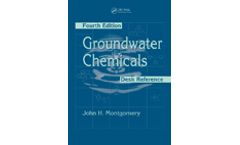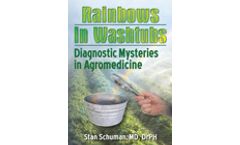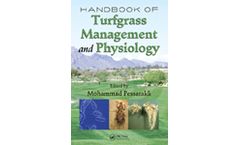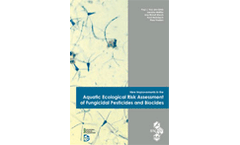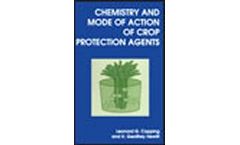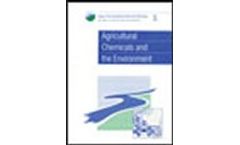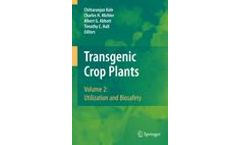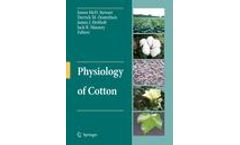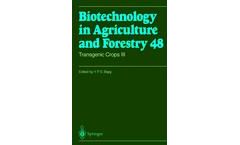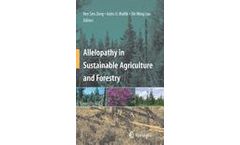Herbicide Management Books
-
Pesticide Formulations & Delivery Systems, 26th Volume: Reassessing Pesticide Technologies
Ten peer-reviewed papers address the latest information on pest control technologies, including: • Development of ASTM method for measurement of extensional viscosity of dilute polymer solutions • Development of new cationic surfactant based emulsi¿able oil adjuvant that exhibits improved properties upon dilution in high electrolyte spray mixtures • Review of attapulgite ...
-
Groundwater Chemicals Desk Reference, Fourth Edition
Building on the foundation set by its best-selling predecessors, the Groundwater Chemicals Desk Reference, Fourth Edition is both a broad, comprehensive desk reference and a guide for field research. This fourth edition contains more than 1,700 additional references, including adsorption data for more than 800 organic compounds and metals, solubility data for over 2,500 compounds, octanol-water ...
-
Rainbows in Washtubs: Diagnostic Mysteries in Agromedicine
Real-life agromedical discoveries previously only available in scientific journals and books This entertaining and enlightening collection of true-life agromedical “,detective stories”, demonstrates innovative problem-solving in places as diverse as a desert farm in the Nile delta and a sharecropper&rsquo,s cabin in South Carolina. From a schoolyard outbreak of pulmonary histoplasmosis ...
-
Handbook of Turfgrass Management and Physiology
A multibillion dollar industry that has tripled in the last ten years, turfgrass management plays an important role in landscaping, golf courses, and other sports surfaces. Proper management and cultural practices are crucial for the performance of these versatile grasses, creating a demand among scientists, researchers, and industry professionals for better quality, hardier grasses. The mounting ...
-
New Improvements in the Aquatic Ecological Risk Assessment of Fungicidal Pesticides and Biocides
In Europe, the current data requirements for pesticides and biocides are generally regarded to be suitable for the risk assessment of chemicals with an insecticidal and herbicidal mode of action. However, the effects of fungicides, in particular on freshwater microbial communities, are not well known despite the fact that fungi play a key role in degradation and nutrient cycling processes. The ...
-
Pesticide Formulations and Delivery Systems, 25th Volume: Advances in Crop Protection Technologies
Twenty peer-reviewed papers provide the latest advances in crop protection technologies and updates on regulatory issues related to the use of pesticides. Topics cover:Developments in Pesticide Formulations—formulating unstable active ingredients in liquid delivery systems; techniques for overcoming herbicide antagonism; a technique for evaluating compatibility of pesticides and ...
-
Roots and Soil Management: Interactions between Roots and the Soil
Readers will discover root-soil interactions and how to use them to manage the quality and productivity of our soils. Ranging from those identifiable from a moving vehicle, to those only elucidated with powerful molecular tools, the rhizosphere is examined by 28 authors in three sections: Macro-scale-- Learn the four classes of root that deal with soil spatial and temporal variability. ...
-
Multiple Stressor Effects in Relation to Declining Amphibian Population
Original research discusses the protocols and approaches to studying the effects of multiple environmental stressors on amphibian populations and gives new perspectives on this complicated subject. This new publication integrates a variety of stressors that can act in concert and may ultimately cause a decline in amphibian populations. Sixteen peer-reviewed papers cover:Toxicity Assessment ...
-
Predicting Invasions of Nonindigenous Plants and Plant Pests
Nonindigenous plants and plant pests that find their way to the United States and become invasive can often cause problems. They cost more than $100 billion per year in crop and timber losses plus the expense of herbicides and pesticides. And this figure does not include the costs of invasions in less intensively managed ecosystems such as wetlands. Nonindigenous Plants and Plant Pests ...
-
Chemistry and Mode of Action of Crop Protection Agents
This book examines the chemistry and mode of action of herbicides, insecticides, fungicides and plant growth regulators. It follows crop protection strategies from early discoveries to the present day, emphasising the biochemical targets of the compounds discussed. Chemistry and Mode of Action of Crop Protection Agents provides an in-depth, yet easy to read and understand, review of the major ...
-
Pesticide Formulations and Application Systems: 18th Volume
Pesticide Formulations and Application Systems: 18th Volume (STP 1347) provides 26 peer-reviewed papers from application, formulation, and synthesis professionals from academia, government, and industry. The volume is divided into three areas: Current Issues -- the impact of pesticide and insect resistant crops on pesticide and adjuvant usage and regulatory concerns; the advantages and ...
-
Agricultural Chemicals and the Environment
Enormous increases in agricultural productivity can properly be associated with the use of chemicals. This statement applies equally to crop production through the use of fertilizers, herbicides and pesticides, as to livestock production and the associated use of drugs, steroids and other growth accelerators. There is, however a dark side to this picture and it is important to balance the ...
-
Vertebrate Pest Control and Management Materials
The book presents test methods on evaluation procedures for chemicals. Devices, and other techniques used to control aquatic and terrestrial vertebrates. The areas of major interest to the reader are methods of reducing potential hazards of pesticides, including insecticides, herbicides, and microbial agents; pesticide hazard to aquatic environments; research methodologies devised primarily for ...
-
Transgenic Crop Plants
Development of transgenic crop plants, their utilization for improved agriculture, health, ecology and environment and their socio-political impacts are currently important fields in education, research and industries and also of interest to policy makers, social activists and regulatory and funding agencies. This work prepared with a class-room approach on this multidisciplinary subject will ...
-
Pond Aquaculture Water Quality Management
The only hope of supplying the world's ever-increasing demand for aquatic food products is through aquaculture, and the vast majority of this is conducted in ponds. Although pond aquaculture may appear at first to be an archaic method of growing aquatic animals, it is one that is consistently profitable when the pond is managed properly. The most important aspect of pond management is the ...
-
Physiology of Cotton
Cotton production today is not to be undertaken frivolously if one expects to profit by its production. If cotton production is to be sustainable and produced profitably, it is essential to be knowledgeable about the growth and development of the cotton plant and in the adaptation of cultivars to the region as well as the technology available. In addition, those individuals involved in growing ...
-
Phytochemical Resources for Medicine and Agriculture
An Historical Perspective of Ancient Poison (Cutler). Plants and Plant Products Used im Mummification (David). Plants Used Medically by Indigenous Peoples (Lewis). Plants as Sources of Medicinally and Pharmaceutically Important Compounds (Kinghorn). SocioEconomic Poisons (Brenneisen, ElSohly). Antiparasitic Agents from Plants (Borris, Schaeffer). Antifungal Compounds in Plants (Kuc). ...
-
Transgenic Crops III
There has been tremendous progress in the genetic transformation of agricultural crops, and plants resistant to insects, herbicides,and diseases have been produced, field tested and patented. Transgenic Crops III compiles this information on ornamental, aromatic, medicinal and various other crops. It comprises 26 chapters and is divided into two sections. I: Ornamental, Aromatic and Medicinal ...
-
Allelopathy in Sustainable Agriculture and Forestry
Simply put, allelopathy refers to an ecological phenomenon of plant-plant interference through release of organic chemicals (allelochemicals) in the environment. These chemicals can be directly and continuously released by the donor plants in their immediate environment as volatiles in the air or root exudates in soil or they can be the microbial degradation products of plant residues. The ...
-
The History, Use, Disposition and Environmental Fate of Agent Orange
For almost four decades, controversy has surrounded the tactical use of herbicides in Southeast Asia by the United States military. Few environmental or occupational health issues have received the sustained international attention that has been focused on Agent Orange, the major tactical herbicide deployed in Southern Vietnam. With the opening and establishment of normal relations between the ...
Need help finding the right suppliers? Try XPRT Sourcing. Let the XPRTs do the work for you

